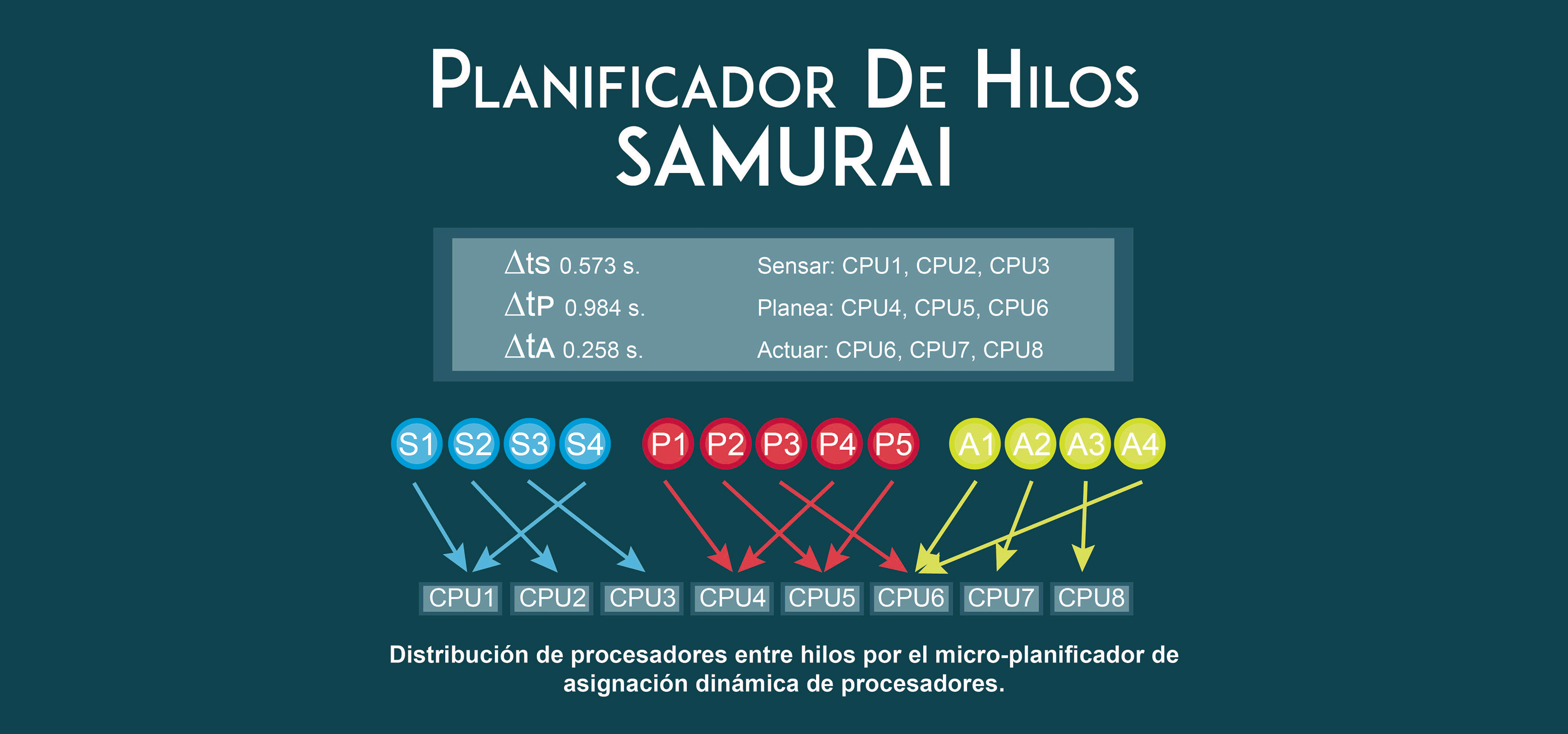

SAMURAI ARCHITECTURE
Our robotic architecture SAMURAI has been under development during the last three years, and its purpose is to operate and control a family of multiple heterogeneous mobile robots (both commercial and home-made platforms). The robotic architecture of this laboratory is being called SAMURAI that in Spanish stands for Sistema de Arquitecturas de MUltiples Robots Autonomos Integrados.
The SAMURAI architecture homogenizes a diversity of robots' features that have considerable physical and functional differences among the robots. For instance, the mechanical structures, locomotive devices, sensors onboard and software drivers.
The term "Heterogeneous robots" means that the robotic platforms are physically and functionally different. The SAMURAI architecture hides such differences for the human-user. Such differences are homogenized at the level of the kernel system.
All robotic platforms have a special firmware in their onboard computers (minimal systems).
A special capability of self-configuration regarding the software and the hardware onboard is provided by:
-
The robots' onboard firmware
-
The robots' onboard special hardware
-
The drivers required for robot and local system (client) interaction
-
The kernel modules
This capability involves algorithms to self-detection of the hardware, and reduces the computational differences that exist for certain type of robots. Most of such feature parameters are the wheels contact points, number of actuators, the required kinematic control algorithms, hardware available I/O ports, sensors onboard, etc.
-
Conceptualización y Planificación Multi-hilos, y Asignación Dinámica Multi-núcleos.
SAMURAI Meta Operating System - Commands:
https://www.youtube.com/watch?v=eGmHn1XTDK8
SAMURAI Meta Operating System - Scripts:
